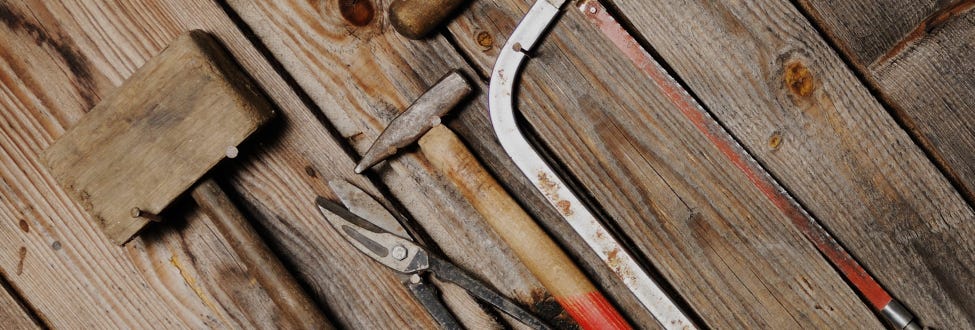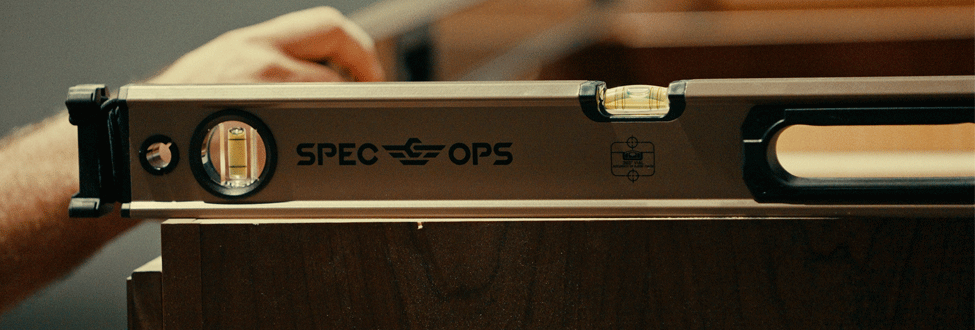The Evolution of Hand Tools
- Sep 1, 2020

Hand tools have been imperative to completing important tasks, such as building a shelter or hunting. They’re an important part of history and many of these same tools are still useful today.
Some tools have received technological upgrades, such as gas or electric power, to improve their efficiency and ease of use. However, there are several classic hand tools that haven't seen many changes throughout the millions of years they’ve been around — though modern versions are now engineered from higher quality materials for durability.
It’s important to know the trade history of the tools you use daily. By understanding this history and how tools helped build ancient towns, cities, and civilizations, you’ll have a better appreciation for their invention. Without some of the world’s most influential hand tools, modern society may not be what it is today.
Hammers
About 3.3 million years ago, the first hammer was used in northern Kenya but it looked a lot different than the hand tool you know and use today. The first hammer was basically a large stone that the user hit repeatedly against a surface to get it to move, wedge, or break.
After using this large stone as a hammer for 3.27 million years, humans finally advanced the tool, so it was easier to use and more effective. They added a stick handle, then used twine to tie the rock to the end. This gave the user more leverage and a better grip for more accuracy.
The modern hammer includes the same design and wooden, steel or fiberglass handle, but usually includes a steel head and an easier shape for a comfortable grip. There are also now a variety of different types of hammers, such as a sledge, claw, or framing hammer.
Pry Bars
There are many types of pry bars to choose from, including a cat-claw, flat-bar, and standard pry bar. The crowbar is the oldest type of pry bar and was first used in France in 1748. This straight piece of iron with a wedge-shaped end was developed to open wooden crates, doors, and boxes.
It may have been called a “crowbar” because it looked like a crow’s beak or feet. This name may have also taken precedence from an old French term “cros,” which means “hooks.”
Since they can be used to open locked doors, pry bars are sometimes associated with robbers and thieves. Most still have the wedge-shaped end so they can also help remove nails from a surface.
When pry bars are used correctly, they must be strong to carry the weight of the user and eventually pry away materials. Like their predecessor, they’re still usually made from metal, steel, or iron.
Screwdrivers
The wood screw was invented in the 16th century while metal screws began to appear closer to the 15th century. In 1744, the first simple screwdriver was invented so metal screws could be easily installed and uninstalled. It was a simple flat metal blade that was time-consuming and painful to use.
The screwdriver experienced vast improvements after the 1800s with the addition of a handle for the user’s comfort. It remained flat but some models had scalloped edges. In the 1850s, screws gained popularity and the screwdriver was mass-produced.
While the same design is used today, the long and flat metal or steel part of the screwdriver is thicker in diameter to add strength to the tool. Modern screwdrivers are always equipped with steel or wooden handles.
Chisels
The chisel is a hand tool that dates back to 8000 BC. The original chisel was made of flint and manipulated so that it offered a thin, sharp blade at one end. However, it’s suggested that Egyptians in ancient times used chisels made from copper and bronze to whittle away at wood or stone.
To use this hand tool, the user first wedged the chisel into an area he wanted to chip away at. Then, he grabbed a heavy rock and hit the back end of the chisel, driving force into the area.
Chisels are used to shave, chip, and reshape wood, metal, stone, or other solid materials. In modern uses, chisels are usually accompanied by hammers or rubber mallets to drive force. Chisels are now made from steel and some may be equipped with a steel or wooden handle. These tools come in a variety of sizes, thicknesses, and weights, depending on their use.
Saws
The saw is a tool that was invented in the Metal Age, the years spanning from 500 BC to 332 BC. It was a blade with teeth that were cast from smelted copper or bronze. The earliest saw designs included wooden handles with long blades, like meat-carving knives. While they were designed for comfort and functionality, the blades were often too thin and the teeth too small. The saws weren’t very effective at cutting through timber without buckling.
In the mid-7th century BCE, the copper or bronze blades were replaced by iron to improve the hand tool’s sturdiness and strength. Saws continued to see improvements to their blade thickness in order to cut through wood more easily.
Nowadays, there are many types of saws, some of which are electric or gas-powered. Table saws, hand saws, chain saws, and other types help users cut through different materials. The shape of the saw, its design, and the thickness and material of the blade depend on the type of saw and what it’s used for.
Axes
Around 30,000 BC, the first axe was invented and was designed with a wooden handle and sharp stone tied with twine to one end. In Egypt in 4000 BC, the first axes were made from copper and eventually transitioned to bronze, then iron. In the Middle Ages, 476 AD to 1453, the wooden handle and sharp iron blade on the axe were perfected. It was a tool used in war and for daily chores, such as splitting wood.
Today’s axe looks like the hand tool used in those medieval times. Most axes are still made from iron or steel, since the weight provides support and strength. There are various sizes and types depending on what the tool is used for, such as a pickaxe, splitting axe, or felling axe.
When you understand the history of hand tools, you have a better appreciation for their craftsmanship and evolution. With this admiration, you’re more likely to properly clean your tools and provide them adequate care after learning about the fundamentals of their use throughout the years.









